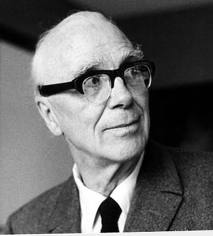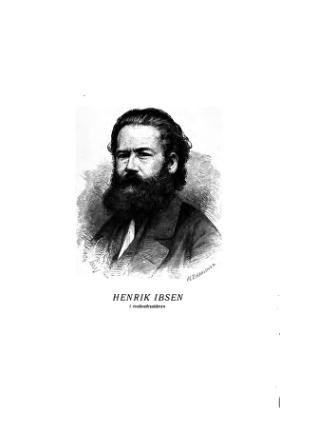Related Research Articles

Isaac Asimov was an American writer and professor of biochemistry at Boston University. During his lifetime, Asimov was considered one of the "Big Three" science fiction writers, along with Robert A. Heinlein and Arthur C. Clarke. A prolific writer, he wrote or edited more than 500 books. He also wrote an estimated 90,000 letters and postcards. Best known for his hard science fiction, Asimov also wrote mysteries and fantasy, as well as popular science and other non-fiction.

Piet Hein was a Danish polymath, often writing under the Old Norse pseudonym Kumbel, meaning "tombstone". His short poems, known as gruks or grooks, first started to appear in the daily newspaper Politiken shortly after the German occupation of Denmark in April 1940 under the pseudonym "Kumbel Kumbell". He also invented the Soma cube and the board game Hex.

Jens Peter Jacobsen was a Danish novelist, poet, and scientist, in Denmark often just written as "J. P. Jacobsen". He began the naturalist movement in Danish literature and was a part of the Modern Breakthrough.
Jotun John Piet Hein is Professor of Bioinformatics at the Department of Statistics of the University of Oxford and a professorial fellow of University College, Oxford. Hein was previously Director of the Bioinformatics Research Centre at Aarhus University, Denmark.
Lucien Stryk was an American poet, translator of Buddhist literature and Zen poetry, and former English professor at Northern Illinois University (NIU).

Sir Ove Nyquist Arup, CBE, MICE, MIStructE, FCIOB was an English engineer who founded Arup Group Limited, a multinational corporation that offers engineering, design, planning, project management, and consulting services for building systems. Ove Arup is considered to be among the foremost architectural structural engineers of his time.

Descriptions of the Jyllands-Posten Muhammad cartoons include explanations for Danish cultural references as well as English translations of Danish and Persian captions; these cartoons became the center of widespread controversy upon their publication in September 2005.

In geometry, a superegg is a solid of revolution obtained by rotating an elongated superellipse with exponent greater than 2 around its longest axis. It is a special case of superellipsoid.

Jens Lauritz Arup Seip was a Norwegian historian originally trained as a medieval historian, but stood out as the strongest of his time in interpreting Norwegian political history in the 1800s, particularly known for having created the term "embedsmannsstaten". He was a professor at the University of Oslo from 1952 to 1975, he specialized in political history and the history of ideas. He was married to fellow historian Anne-Lise Seip. Seip's use of the Norwegian language and his writing style which numerous historians have described as brilliant, and often tried emulating. Seip was included among the 16 authors of " The Norwegian literary canon" from 1900 to 1960 and 2nd among 20 authors in a ranking of nonfiction writers conducted by Dagbladet in 2008. Seip received an honorary doctorate at the University of Bergen from 1975.

Jens Albinus is a Danish actor and director.
This is a list of works by the science fiction author Frank Herbert.
Christian Kølle was a Norwegian educator and theologian known for his at-the-time innovative views on written Norwegian that preceded many of the later language reforms.
Events from the year 1996 in Denmark.

The Oxford Ibsen is a book series containing the most comprehensive English translations of the noted playwright Henrik Ibsen's collected works, edited by James Walter McFarlane (1920–1999) and published between 1960 and 1977. It is an important edition as the releases of Ibsen's plays are often translated into third languages through The Oxford Ibsen, rather than from the original Norwegian or Danish source texts. It also contains some drafts and preparations, and each play has a foreword that informs about first performances on stage, interpretation and reception. The Oxford series is still missing some of Ibsen's articles, reviews, speeches, correspondence, and poetry.

Carl Valdemar Jussi Henry Adler-Olsen is a Danish crime fiction writer, a publisher, editor, and entrepreneur, best known for his Department Q series. He made his debut as a nonfiction writer in 1984, and as a fiction writer in 1997.
The phonology of Danish is similar to that of the other closely related Scandinavian languages, Swedish and Norwegian, but it also has distinct features setting it apart. For example, Danish has a suprasegmental feature known as stød which is a kind of laryngeal phonation that is used phonemically. It also exhibits extensive lenition of plosives, which is noticeably more common than in the neighboring languages. Because of these and a few other features, spoken Danish can be challenging for Norwegians and Swedes to understand without training, although they can easily read written Danish.
Events from the year 1876 in Denmark.

Jens Hendrik Oliver Djurhuus, called Janus Djurhuus, was the first modern Faroese poet. He and his younger brother Hans Andreas Djurhuus, also a poet, are called the Áarstova brothers after the house where they grew up.
Piet Hein Hoebens was a Dutch journalist, skeptic, and critic of parapsychology.

Aasta Elisabeth Reiss was a Norwegian pianist and cabaret performer. She was the daughter of the lawyer, composer, and musicologist Georg Reiss and the sister of the actor Thorleif Reiss.
References
- ↑ "Database of Gruks". piethein.com.
- ↑ This webpage [1] is a database of over 7,000 gruks by Piet Hein, in Danish. The page says (in Danish) that you can freely search it and have them emailed directly to you.
- ↑ "Books in Danish". piethein.com.
- ↑ Hicks, Jim (14 October 1966). "A Poet with a Slide Rule: Piet Hein Bestrides Art and Science". Life. 51 (16): 55–66. ISSN 0024-3019.
- ↑ A long article in Life Magazine [4] talks about Piet Hein's becoming a passive resister beginning on page 63. It corroborates what is said here. At the time, he thought there would be 4-5 grooks, not the ~7,000 that he later wrote. He says that the word "gruk" came to him out of empty air.
- ↑ piethein.com Archived 4 August 2010 at the Wayback Machine
- ↑ "Here is the reason why: Piet is the Dutch form of the name Peter or Petrus, which means rock, stone, and Hein is a way of spelling 'hen', the old Danish word for a whetstone. 'Kumbel', or 'kumbl' as it strictly speaking should be written, also means stone, though more a grave monument. In other words, Piet Hein, or Stone Stone can, in a way, be translated by Kumbel Kumbel. He originally wrote the second word with two Ls, also later the signature became just Kumbel – the name he is at least as well known by as his own." [6]
- 1 2 Hein, Piet (January 1, 2002). Hugo Piet Hein (ed.). Collected Grooks I (2 ed.). Borgen. ISBN 87-21-01859-6.
- ↑ Consolation Grook is the fourth grook in Collected Grooks I. [8]
- ↑ Hein, Piet (November 15, 1966). Grooks. Translated by Jens Arup. The MIT Press. ISBN 978-0262580076.
- ↑ Hein, Piet (January 1, 1968). Grooks 2. Translated by Jens Arup. Doubleday. ISBN 978-8741810942.
- ↑ Hein, Piet (January 1, 1970). Grooks 3. Translated by Jens Arup. Doubleday. ISBN 978-0773610040.
- ↑ Hein, Piet (January 1, 1972). Grooks 4. Translated by Jens Arup. Doubleday. ISBN 978-0385006590.
- ↑ Hein, Piet (January 1, 1973). Grooks 5. Translated by Jens Arup. Doubleday. ISBN 9780385029681.
- ↑ Hein, Piet (January 1, 1978). Grooks VI. Translated by Jens Arup. Borgen's Pocketbooks. ISBN 978-8741846811.
- ↑ Hein, Piet (January 1, 1984). Grooks VII. Translated by Jens Arup. Borgen's Pocketbooks. ISBN 978-8741871639.
- ↑ "Books in other languages". piethein.com. Retrieved 2023-07-04.
- ↑ Hein, Piet (January 1, 2002). Hugo Piet Hein (ed.). Collected Grooks II (2 ed.). Borgen. ISBN 87-21-01861-8.
- ↑ Hein, Piet (January 1, 1968). Jens Arup (ed.). Runaway Runes: Short Grooks I. Borgen. ISBN 87-418-2620-5.
- ↑ Hein, Piet (January 1, 1968). Jens Arup (ed.). Viking Vistas: Short Grooks II. Borgen. ISBN 87-418-5639-2.